I used inspiration from the colony transfer section of this page and the simple D. Coates nuc box plan as the basis for my lang to warré transitioning nuc box. I need to put this box on top of a warré box so I reduced the height of the walls a 1/2 inch to compensate for the height of the floor that I am removing from the D. Coates design. The only other modification to the base of the design was to omit an entrance in this box. Instead, the warré box will sit on a regular bottom board entrance.
I did add a floor just to the section that hangs over the side of the warré in the back and front. I also glued and nailed 'wings' to the side of the nuc which extend to the edge of the warré box. The wings serve as a roof for the section of the warré the nuc does not cover.
The wings are slightly asymmetrical, this was done in order to position the nuc box on top of the warré such that the gaps between the langstroth frames will line up with gaps of the warré frames. The hope is that this will make it easier for the bees to move between the two boxes.
I made a five frame nuc box, but around my area they typically sell four frame nucs. So, in addition to the frames I receive from the bee breeder, I will place one of my smaller warré frames in the nuc box. To do this I simply used wire from twist ties to strap a frame to a wooden slat that fits the length of the langstroth. Once the bees start drawing out this frame I will be able to remove the wooden slat and place the frame in the box below to encourage them to move down.
On top of the plywood roof I added an old printing press plate that I sourced from a local publisher and a discarded plastic corflute sign board (similar to that used for election signs). The sign board has air pockets and will hopefully slow the heat from the sun on the metal from conducting through the roof. The printing press plates are simple to work with. I cut it to size with regular scissors and staple it in place with an ordinary staple gun.
The plywood was scrap from neighbourhood carpenters, and the paint came from the municipal household hazardous waste dump, thus the cost of making this box was virtually nothing.
I'll be eager to get the nuc off the hive and give them a proper roof, but am confident this box should make for a smooth and simple transition between the different shaped hives.
Update: I've now successfully encouraged bees to move down with this method.
You can see the nuc transition box in practice here. The main issue I had was that they built comb on the side of my frames that would need to be broken off. In subsequent attempts I used a wooden block to prevent this.
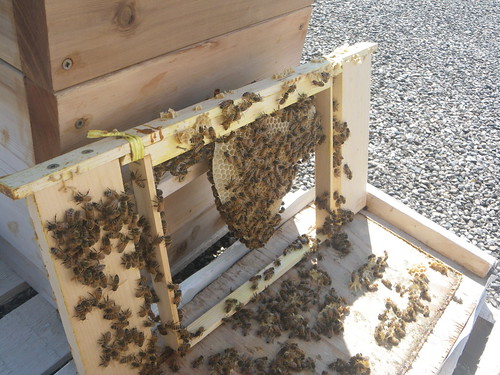 2015 update: While the wooden blocks were a significant improvement they would still build little combs between the frame and the blocks and it was cumbersome to untie the frame. So I made the blocks with only a 'bee space' between it and the frame and a little notch at the top of the block acts as a frame rest:
2015 update: While the wooden blocks were a significant improvement they would still build little combs between the frame and the blocks and it was cumbersome to untie the frame. So I made the blocks with only a 'bee space' between it and the frame and a little notch at the top of the block acts as a frame rest:

Each wooden block is attached using a single screw, allowing the block to turn and making it relatively easy to remove the propolized frame.

My current approach is to try to move frames down, and place new frames back in the nuc as long as they are raising brood in the nuc. As comb building is prioritized at the top of the hive, and I already have drawn combs up here, I found it to be a good way to keep getting straight combs. I stop adding new combs once I no longer have a brood frames in the nuc box as they bees like to make honey combs bulge out into any available open space.

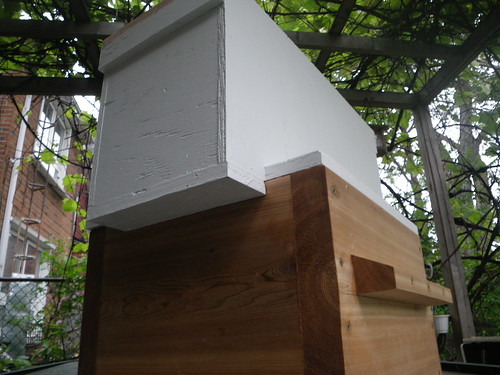

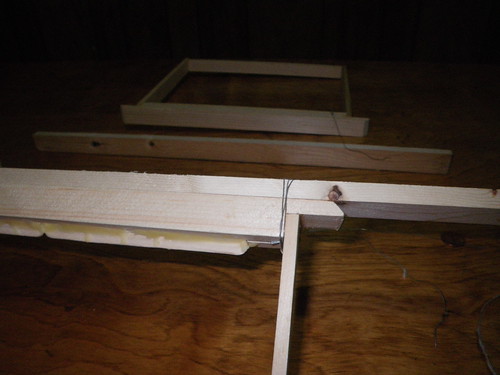
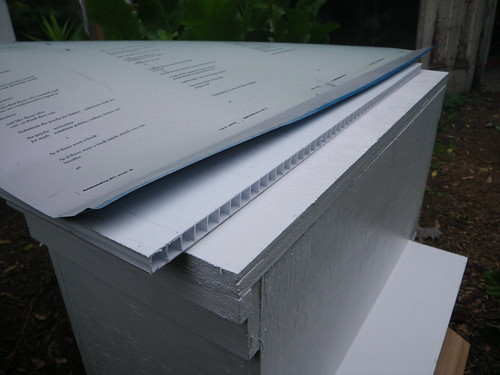
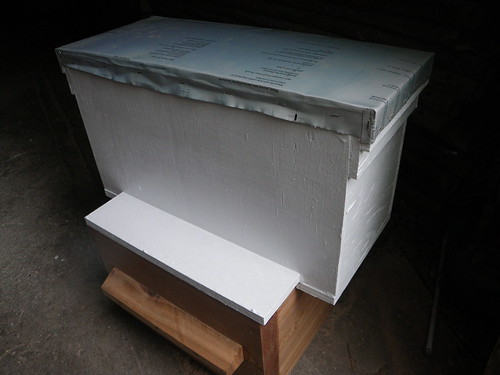
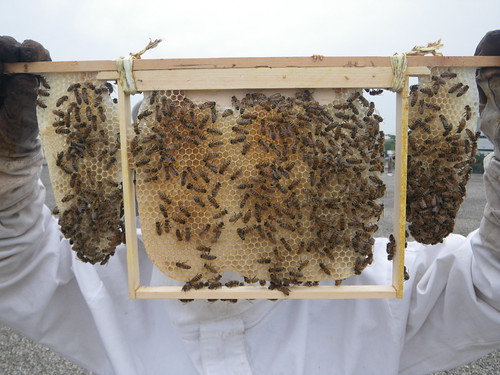
Please, tell me more about the outcome... any changes or things you would do different?
Thank you for this tutorial. I am a first year beekeeper and lost my Warre hive and bees in the hurricane. I am on the east coast of Florida. After alot of searching, I came upon a man selling a five frame nuc, with bees, broad, honey and of course a queen. I am thrilled. Thank you again for the guidance. -Kathi
I built a nut box based on your above article and information. Thank you. Looking forward to trying it out this weekend, my bees arrive Saturday. I'm a newbie and didn't realize I needed this box until yesterday. I was a little worried but it didn't take long to build. Thanks again.
hi, can someone please explain why the warre box goes underneath the lang - to me it doesnt make sense. I thought that bees will always move up and try to grow comb down - so wouldnt it make sense to put the warre on top and let them move up to build there? thanks
The Warré hive traditionally doesn't use foundation or reuse old comb. This creates some complications if placing a new box on top (though there are solutions). In addition to that practical reason, Warré hive users often embrace the philosophy of 'nadiring' or placing new boxes on the bottom, because:
* There is the idea it is more natural. A honeybee colony building a hive in a hallow tree starts at the top of the tree and only builds down.
* Simplicity + bee-friendliness: The system was originally designed for simplicity of use by people who were not necessarily interested in all the technical nuances in beekeeping. For example add a super too early can potentially add stress since it is less efficient for a colony to maintain reequired hive temperatures when there is an empty space above the brood nest.
In my experience an experienced beekeeper can use context to determine if extra space above or below the existing nest would be more helpful to a colony.
For the purposes of transitioning to a warré hive from another system, I have come to believe adding the warré boxes on top is preferable to me. You might need all the honey a nuc produces in it's first year for winter, I don't think the nuc transition box is great for winter, and if the transition box is on top it's going to get filled with honey. With judicious but generous addition of space above a lang transition box placed on the bottom it's possible to get the bees to move out in a single season, without needing to take away valuable winter resources.